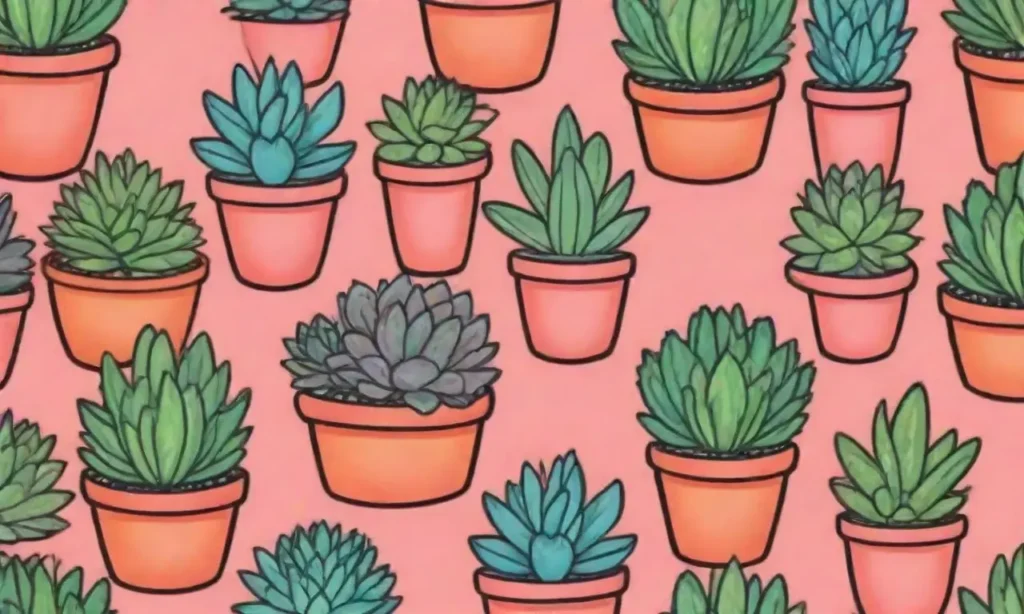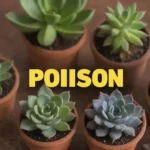Safety First: Family-Friendly Succulents Without the Risk

Introduction
Succulent plants, with their captivating shapes and vibrant colors, have surged in popularity in recent years as beloved houseplants. Apart from their aesthetic appeal, many people appreciate their hardiness and low maintenance requirements, making them a perfect fit for families. However, one crucial factor to consider when choosing plants for your home is safety. Some succulent varieties can be toxic to pets and children, presenting a risk that thoughtful plant lovers must navigate.
In this article, we will delve into the world of family-friendly succulents, identifying safe options that can thrive in your living spaces without the concern of toxicity. We’ll also explore care tips, best practices for selection, and the educational benefits of incorporating these plants into your home.
Understanding Toxicity in Succulents
When it comes to plant toxicity, understanding what makes certain plants dangerous is essential. Toxicity can vary widely between different species and sometimes even within the same family of plants. This is particularly important for families with pets and children, who are more likely to come into contact with plants and may mistakenly ingest leaves, flowers, or juices.
Common Signs of Toxicity
It's important to be aware of the common indicators that a plant may be toxic. Many times, the risk arises from the plant's natural chemical defenses. Some common signs of toxicity include:
-
Gastrointestinal Distress: If a pet or child ingests part of a toxic plant, they may experience symptoms like vomiting, diarrhea, or drooling. Some succulents can irritate the digestive system, leading to discomfort.
-
Dermatitis: Certain succulents may cause skin irritation upon contact. Allergic reactions can present as rash, redness, or bumps on the skin. The sap from some toxic varieties can be particularly irritating.
-
Neurological Symptoms: Although less common in succulents, some plants can affect the nervous system, leading to lethargy, trembling, or seizures. Awareness of these symptoms is essential for quick response and care.
 The Truth About Succulent Poison: Myths and Facts Debunked
The Truth About Succulent Poison: Myths and Facts Debunked
Understanding these potential issues can help caregivers make informed decisions about which plants to keep indoors, especially in environments where children or pets are present.
Identifying Safe Succulent Varieties
Fortunately, there are numerous succulents that are entirely non-toxic and safe for families. Examples like Haworthia, Echeveria, and Zwartkop are not only beautiful but also pet and child-friendly. When selecting plants, look for descriptions that specify non-toxic or pet-safe, often provided at nurseries or on garden websites.
Haworthia is one excellent choice; this low-growing succulent features striking rosettes of fleshy leaves and is highly resilient to neglect. Its leaves are safe to touch or taste, making it ideal for curious youngsters. Another sound option is Echeveria, known for its stunning colors and shapes. These rosette-forming succulents do not harbor toxins and bring a splash of color to household decor.
Additionally, Zwartkop, known for its dark, glossy leaves, is not only stunning but is also safe, making it a solid choice for homes with children and pets. When selecting thickness and variety, keep safety in mind to create not only a visually appealing space but also a worry-free one.
Benefits of Having Succulents at Home
Integrating succulents into your home does not only elevate aesthetics but also offers a multitude of benefits that can enhance living environments, particularly within family settings.
Aesthetically Pleasing and Versatile
Succulents come in various shapes, sizes, and colors, adding a delightful visual element to your home. They can be arranged in dynamic displays, combined in terrariums, or used in window gardens. The versatility of these plants makes them suitable for multiple design styles, from modern minimalist to rustic farmhouse.
Moreover, they can be placed in planters of different materials, textures, and brickwork, which means it’s possible to cater to specific themes or color schemes in your home. With the right arrangement, you can create a welcoming, visually pleasing atmosphere that reflects your style and encourages a relaxing environment.
 Toxic vs. Non-Toxic Succulents: A Complete Comparative Study
Toxic vs. Non-Toxic Succulents: A Complete Comparative StudyEducational Opportunities
Building a garden with succulents can also serve as an educational opportunity for children. By introducing young ones to plant care, they can learn about responsibility, nature, and the science behind photosynthesis. As children help with watering, pruning, and repotting, they gain practical skills and foster a sense of connection to the natural world.
Succulents can also stimulate curiosity; kids can observe how these plants adapt to harsh conditions, developing an understanding of sustainability and the importance of caring for living things. These hands-on experiences not only cultivate learning but also strengthen family bonds as you share the joys and challenges of gardening together.
Low Maintenance Requirements
One of the most appealing aspects of succulents is their low maintenance requirements. Unlike other houseplants that may demand regular watering, specific lighting conditions, and frequent fertilization, succulents thrive on neglect. Their thick, fleshy leaves store water, allowing them to adapt to arid environments, which means they only need infrequent watering, making them perfect for busy families.
When you choose family-friendly succulents, you can focus more on spending quality time with your loved ones rather than on plant care. This ease of maintenance encourages families to incorporate greenery into their lives without the stress of ongoing gardening demands.
How to Care for Family-Friendly Succulents

Caring for succulents is relatively straightforward, but understanding the needs of these plants can help ensure their longevity.
Sunlight and Positioning
The placement of your succulents is crucial for their growth and well-being. Most succulent varieties thrive in bright, indirect sunlight but can tolerate some direct rays, particularly in the morning or late afternoon when the sun isn’t too harsh. Placing them too close to windows with intense sunlight can lead to sunburn, while insufficient light may cause them to stretch out and lose their compact shape.
 Do's and Don'ts: Handling Toxic Succulents Correctly
Do's and Don'ts: Handling Toxic Succulents CorrectlyIf you’re growing succulents indoors, consider using sheer curtains to diffuse sunlight or rotating their position to ensure even light exposure. Alternatively, using a grow light can supplement natural light during winter months or in dim rooms.
Watering Practices
In terms of watering, the adage "less is more" applies to succulents. Overwatering is one of the most common mistakes that can lead to root rot and the death of the plant. Wait until the soil is entirely dry before watering again, and when you do, aim to moisten the soil thoroughly without letting the plant sit in water.
Using pots with drainage holes is crucial, as it helps avoid soggy conditions that can harm the roots. Techniques like the "soak and dry" method can work wonders. This approach involves soaking the soil thoroughly and then allowing it to dry entirely before the next watering round begins.
Soil and Fertilization Needs
When it comes to soil, ensure that you use a well-draining potting mix, specifically formulated for cacti and succulents. These mixes typically contain sand, perlite, or pumice to facilitate drainage and mimic the natural conditions succulents thrive in.
As for fertilization, it's best to keep it minimal. During the growing season (spring and summer), light feeding with a diluted liquid fertilizer specifically designed for succulents every few months should suffice. In the winter, when growth slows, it’s advisable to halt any fertilization altogether to prevent stress on the plants.
Conclusion
Selecting family-friendly succulents provides a wonderful opportunity to bring the beauty of nature into your home without compromising safety. The aesthetic appeal, low maintenance needs, and educational opportunities make succulents a perfect choice for families with children and pets. With careful selection, these plants can thrive safely, creating a vibrant and welcoming environment.
By understanding the toxicity risks associated with certain plants, families can make informed choices that align with their lifestyles. With the right care and attention, succulents can flourish and become beloved parts of your home, inspiring curiosity and fostering responsibility in younger generations.
Ultimately, the decision to incorporate succulents into your home can yield substantial benefits, from enhanced living spaces to improved indoor air quality. So, embark on your succulent journey with confidence, knowing you’re choosing safe, beautiful companions that will enrich your family life for years to come.
If you want to read more articles similar to Safety First: Family-Friendly Succulents Without the Risk, you can visit the Toxicity Levels category.
